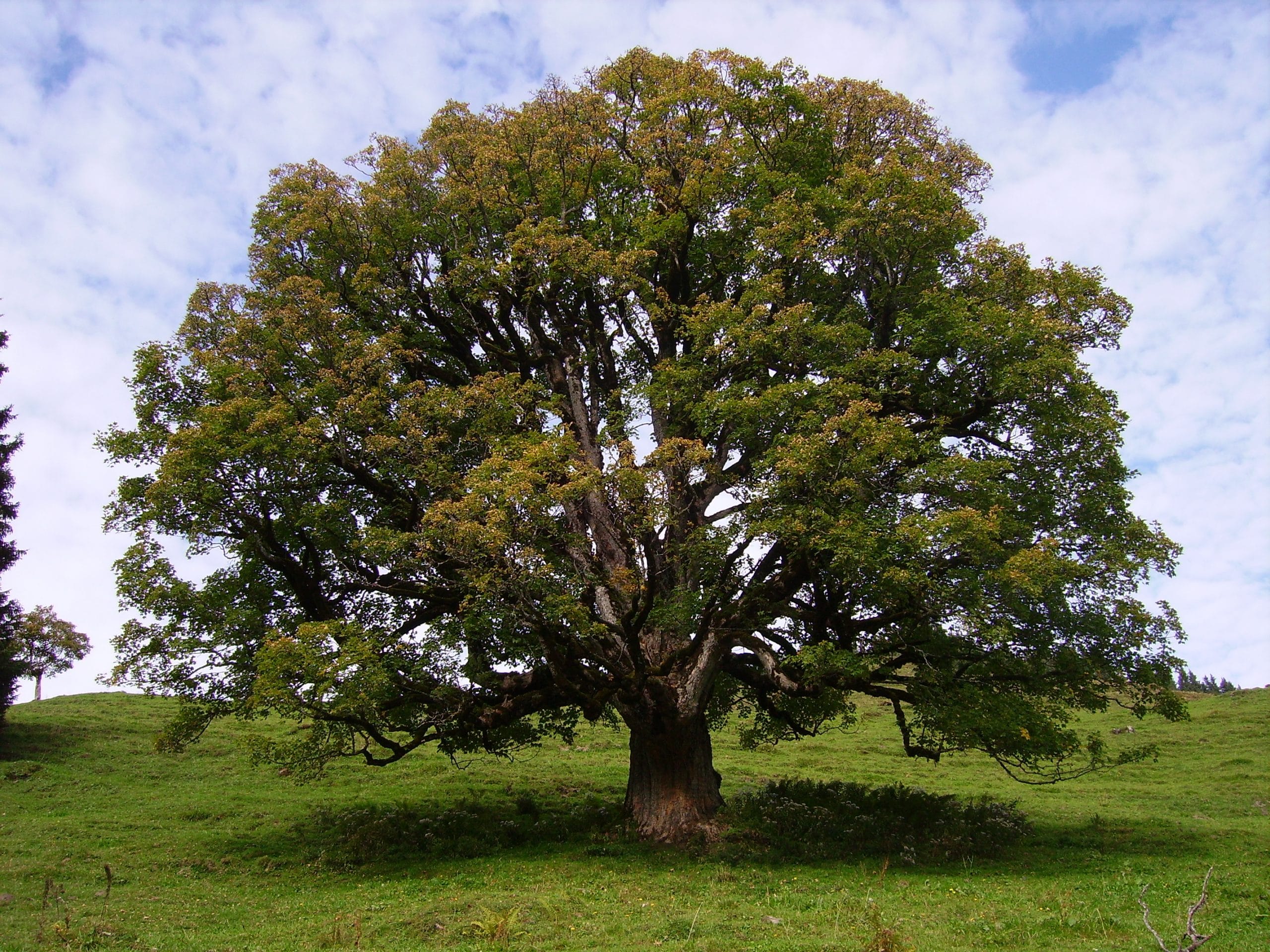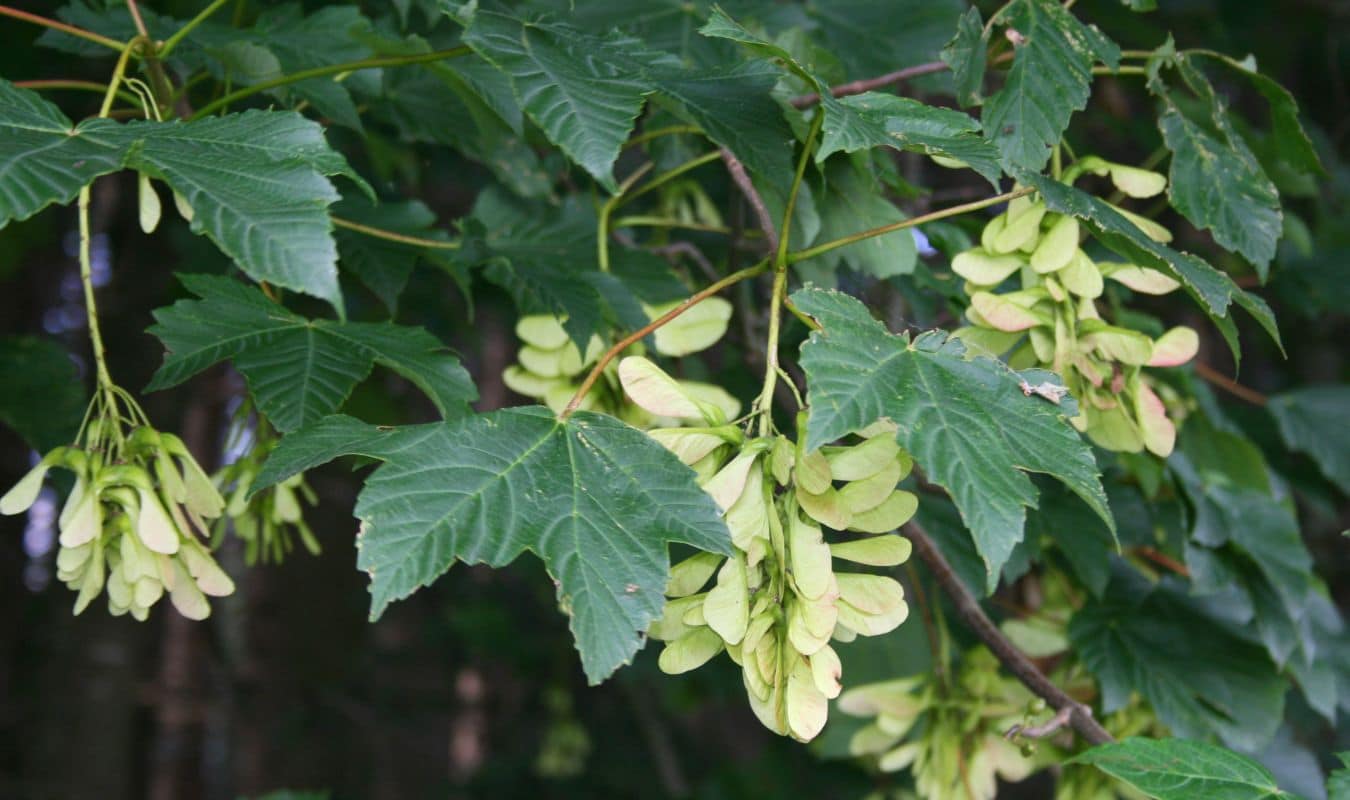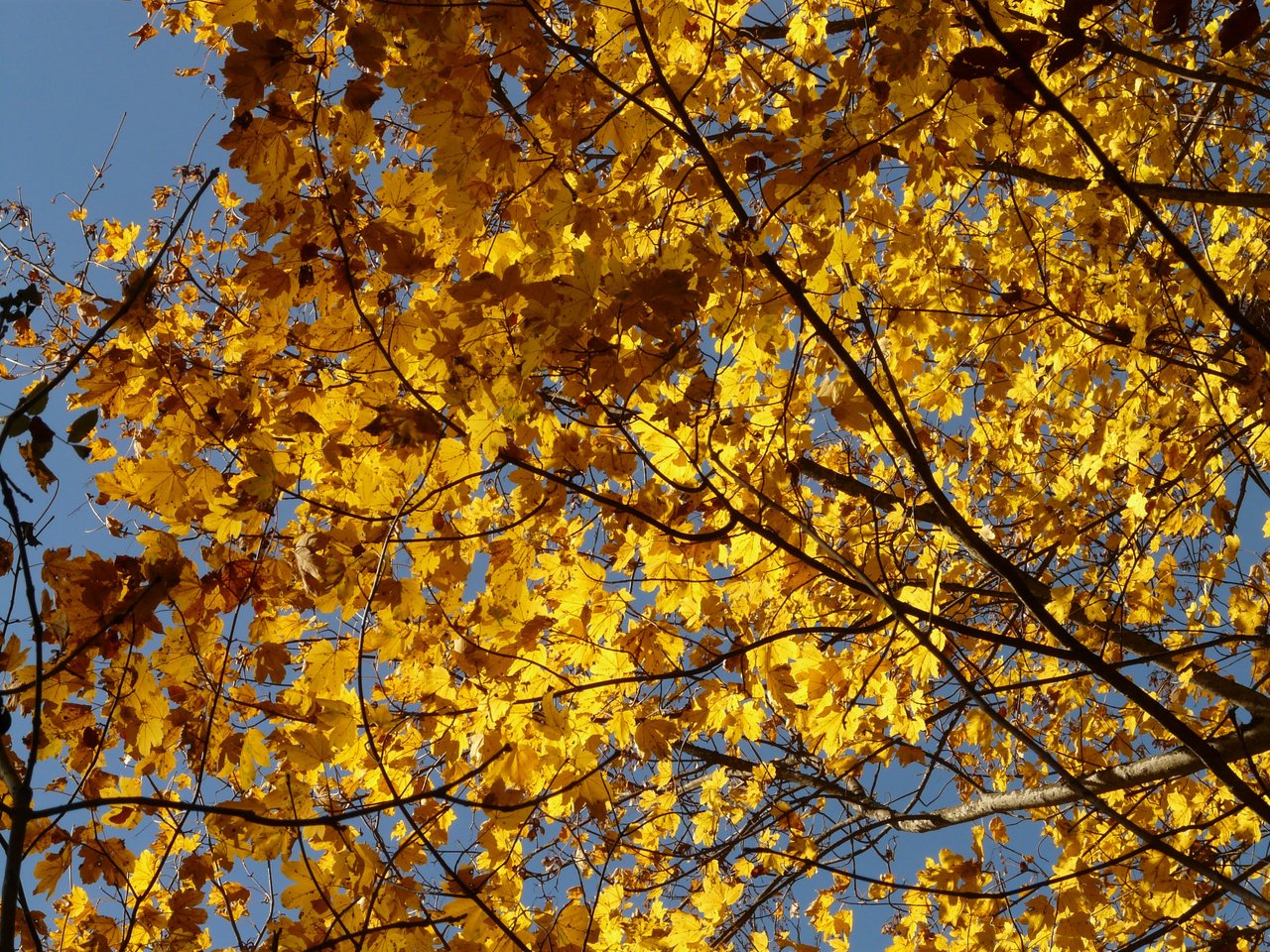
Image sourced from Wikimedia/Lidine Mia
El Acer pseudoplatanus It is an immense tree, one of those that you have to look up and move away several meters if you want to see it in all its splendor. One could almost say that it is one of the greatest of the entire genre, if not the greatest.
For this reason, it is a perfect plant to enjoy in spacious gardensprovided the weather is temperate.
What is the origin and characteristics of the Acer pseudoplatanus?

Image sourced from Wikimedia/MurielBendel
This is a very large tree It can reach 30 meters in height and develops a rounded and wide crown., with open branches. It grows naturally in central and southern Europe, as well as in southwestern Asia, in open fields and in forests. It is popularly called false banana, sycamore, sycamore maple, blada, or white maple.
Its leaves are palmate, usually green but can also be purple depending on the variety, and divided up to the middle into five oval-shaped lobes, and up to 15 centimeters wide. In autumn, if the conditions are right, they turn yellowish before falling.
It blooms in spring. The flowers are grouped in clusters, are yellow-green, and hermaphrodite or dioecious.. The fruit is two united samaras (what is known as disamara) that are provided with wings which are useful to get as far away as possible from the parent tree with the help of the wind.
What uses is it given?

Image sourced from Wikimedia/Franz Xaver
It is used as an ornamental plant. It is a tree that looks great as an isolated specimen in large gardens. It can also be pruned so that it does not grow so much; that way it is interesting to have it in smaller spaces.
Another decorative use that is given to it is as bonsai, but due to the size of its leaves it can be a somewhat complicated species to work with, since the best trees for bonsai are those with small foliage.
What are the care of the false banana?

El Acer pseudoplatanus it is a tree that requires, in addition to enough space, a temperate climate, with frosts in winter. You need to feel the passing of the seasons, so It has to be planted outside, at a distance of at least ten meters from pipes, walls, and other to achieve this way, also, that it has an excellent development.
The soil must be fertile, with good drainage and with a neutral or slightly acidic pH.. Although it can tolerate clay soils, in these it usually has problems of iron chlorosis, characterized by the yellowing of the leaves due to the lack of iron. The water used for irrigation should also be slightly acidic, but if you can get it from rain, it will be better. Watering should be frequent, as it is a plant that does not tolerate drought.
Moreover, it is interesting to fertilize it throughout the growing season with mulch, compost, earthworm humus or manure from herbivorous animals. At the end of winter, if necessary, you can trim its branches a bit, keeping its crown rounded.
It multiplies by seeds in autumn-winter, which must be cold before germinating in spring. If you live in an area with a temperate but mild climate, with very light frosts, you should stratify them in the fridge for three months.
Finally, you should know that it resists frosts down to -18ºC, and maximum temperatures of up to 30ºC.